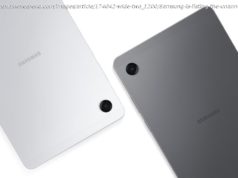Enterprise adoption is trumping entertainment uses and will spring VR and AR into the mainstream.
Virtual reality and augmented reality had a reality check in 2016. Despite heavy investment and industry buzz, the predicted mass adoption of VR/AR never materialized. Scratch below the surface, however, and you can see the beginnings of real movement for the technology — albeit from a decidedly un-glitzy place.
B2B and enterprise applications of VR/AR quietly had a very active year, and continue to gain traction in 2017. Application revenues from enterprise VR, in fact, are now projected to outpace consumer entertainment revenues by 2020. And without any of the hype.
Early adoption of VR/AR for gaming and entertainment is clearly still in its infancy. Even Mark Zuckerberg estimated a full decade would pass before it went mainstream. Blame it on the high costs of clunky hardware, the absence of “hit” content or a general lack of consumer interest, but the industry’s projected $700 billion revenue by 2025 certainly seems a tad ambitious at this point. While consumer VR/AR will almost certainly “arrive” some day, just how big the industry will get, when it will take off and how remain the key questions.
Research firm Tractica projects enterprise spending on VR/AR will be roughly 35 percent greater than consumer spending on VR/AR entertainment by 2020, not including hardware-related revenues. According to Tech Pro Research, 67 percent of businesses that responded to their study are now considering using AR in the future, while 47 percent are considering VR. Digital transformation is converging with the decrease in cost of VR hardware. Couple that with advances in related software, systems and tools, and enterprise uses are fast becoming the industry’s most viable launching pad.
In 2017, VR/AR use cases continue to proliferate across diverse business categories, with innovators, entrepreneurs and startups leading the way. Healthcare, education, CPG/FMCG, telecom, advertising and real estate are all beginning to benefit from virtual and enhanced reality applications. Hundreds of creative applications of 3D visualization and augmentation are coming to the fore.
The marketing and advertising segment is full of VR studios, application developers and distribution networks. Generally, they support agencies and brands to deliver immersive brand experiences for sales and marketing purposes. Outlyer Technologies, for example, is using 360-degree mobile ad formats to help drive user engagement. While recently at SXSW, the Metro Atlanta Chamber of Commerce utilized technology from Foundry 45 to provide a virtual experience of Atlanta to help recruit candidates. Atlanta, in particular, has seen a proliferation of VR/AR companies, with approximately 50 now, where there was just a dozen a few years earlier.
And it’s not just in marketing and advertising where these types of use cases are mushrooming. In manufacturing, WorldViz has become a leader in visualization and testing with its Vizard and Vizmove VR application suite for companies as diverse as P&G, Philips, 3M, Perkins & Will and many others. Their open-source and extendable libraries enable large and small enterprises to quickly design, manipulate and test new products in real-world scenarios.
Uses in education — whether employee training, primary education or advanced research — are benefiting from VR’s capabilities to visualize massive data sets and transport students to remote countries. Google’s Project Expedition brings virtual discovery and immersive world tours to the classroom. Iceland’s Sólfar Studios recently gifted its Everest VR project to the Royal Geographical Society in the U. K. These and others — like Alchemy VR, Unimersiv and Curiscope — are quickly changing the education space with their immersive, experiential curriculum, tools and training.
VR for healthcare spans patient care, telemedicine, rehabilitation and training. Indeed, 2016 marked the first year surgery was performed using a VR camera. Medical students (and the general public) were able to operate right along with the doctor using VR in an operation visualization application from Mativision. VisitU connects kids in the hospital to their own rooms through headsets and 360-degree cameras in their homes. The Virtual Reality Medical Center is one of a growing number of medical practices in cyber psychology to help patients with phobias and other chronic mental health issues.
The industry as a whole has some way to go before it becomes the $700 billion behemoth some experts predict. This sampling of emerging uses driving innovation in the enterprise space, however, indicates a clear path to meaningful revenues for the technology. Certainly the field will continue to develop and evolve in the consumer space, but the enterprise and B2B cases are prolific right now. Smart entrepreneurs and developers will identify the key elements of early successes and apply those lessons to other consumer-relatable industries with a B2B focus. This is where the technology is finding its footing and opening the door to mass adoption.






